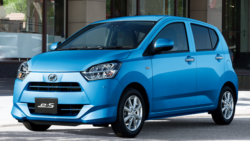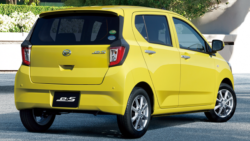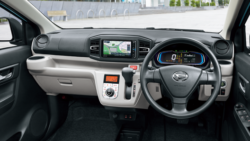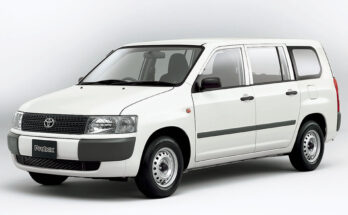The new Daihatsu Mira e:S has been launched in Japan with added convenience and safety features, as well as an even lighter body and more efficient powertrain.
Related: Honda Grace Facelift Launched in Japan with Honda Sensing Suite
Exterior
A new, more angular look can be seen on the outside, with the front end featuring new headlights and a large trapezoidal grille with upper and lower openings. Along the sides, there are larger wheel arch bulges, a deeper surface cut along the lower surface of the doors as well as squared-off side window openings, while the rear features bolder three-dimensional LED tail lights. Air resistance has also been reduced by 3%.
Interior
The interior has remained largely the same as before, but a few additions are made including a storage shelf on the dashboard and cup holders under the side air-con vents.
Engine & Transmission
As before, the new Mira e:S is powered by a KF 658 cc naturally-aspirated 3-cylinder petrol engine, however, the engine has been optimized for better efficiency with the adoption of a cooled ion-controlled exhaust gas recirculation system, along with a delayed closing of the intake port to reduce compression pressure.
Other additions include twin injectors per cylinder for better fuel atomization and a more stable combustion, as well as individual ignition timing control on each cylinder to optimize combustion. The standard-fit CVT has been improved too, with low-viscosity CVT fluid and a thermal controller that uses the CVT fluid to cool the engine coolant – this increases the efficiency of both engine combustion and the transmission.
Related: Are Used Imports A Blessing?
The rolling resistance has also been reduced through improvements on the drive components, including low-viscosity oil in the rear differential on all-wheel drive models. The Eco Idle auto engine start/stop system also now shuts the mill off at 11 km/h rather than 7 km/h on the original Mira e:S, while a scroll-type air-con compressor saps less power from the engine.
Weight Reduction
Under the skin, the monocoque has been made lighter and stiffer, and resin is now used on the front fenders, tailgate and fuel tank (on two-wheel drive models) to save even more weight. The outgoing model weighed as little as 730 kg in 2WD form, but the new model now weighs an astonishing 650 kg only (720 kg with AWD).
Economy
As such, the Mira e:S is now capable of achieving an impressive fuel consumption figure of 34.2 km per liter on the Japanese JC08 cycle, or 32.2 km per liter with AWD. The base B and L variants receive smaller 13-inch steel wheels and score even higher, travelling as far as 35.2 km per liter of fuel.
Safety
Safety-wise, the Smart Assist III package, standard on G and X models and optional on others, features autonomous emergency braking with pedestrian detection (utilizing the world’s smallest stereo camera), lane departure warning, false start suppression control front and rear, automatic high beam and vehicle start warning to alert drivers when the vehicle in front is leaving from a traffic light stop.
Price
Pricing for two-wheel drive models start at 842,400 yen (PKR 7.97 lac), and for that you get halogen headlights, manual air-conditioning, a digital instrument cluster, dual airbags, ABS and stability control. Opting for Smart Assist III bumps the price up to 907,200 yen (PKR 8.58 lac). The L variant, which costs 874,800 yen (PKR 8.27 lac) as standard and 939,600 yen (PKR 8.89 lac) with Smart Assist III throws in hubcaps and rear power windows.
Related: 2017 Toyota Vitz Facelift Launched in Japan
The 1,080,000 yen (PKR 10.21 lac) X variant adds LED headlights, larger 14-inch steel wheels and power-adjustable body-colored door mirrors. The range-topping 1,209,600 yen (PKR 11.44 lac) G trim gains 14-inch alloys, keyless entry, auto air-con, seat heating, auto-folding door mirrors and automatic headlights. All-wheel drive models cost an extra 129,600 yen (PKR 1.22 lac) across the board.
Source: Paultan
https://youtu.be/ONKf9OkIb14

A computer animation professional with over 23 years of industry experience having served in leading organizations, TV channels & production facilities in Pakistan. An avid car enthusiast and petrolhead with an affection to deliver quality content to help shape opinions. Formerly written for PakWheels as well as major publications including Dawn. Founder of CarSpiritPK.com










